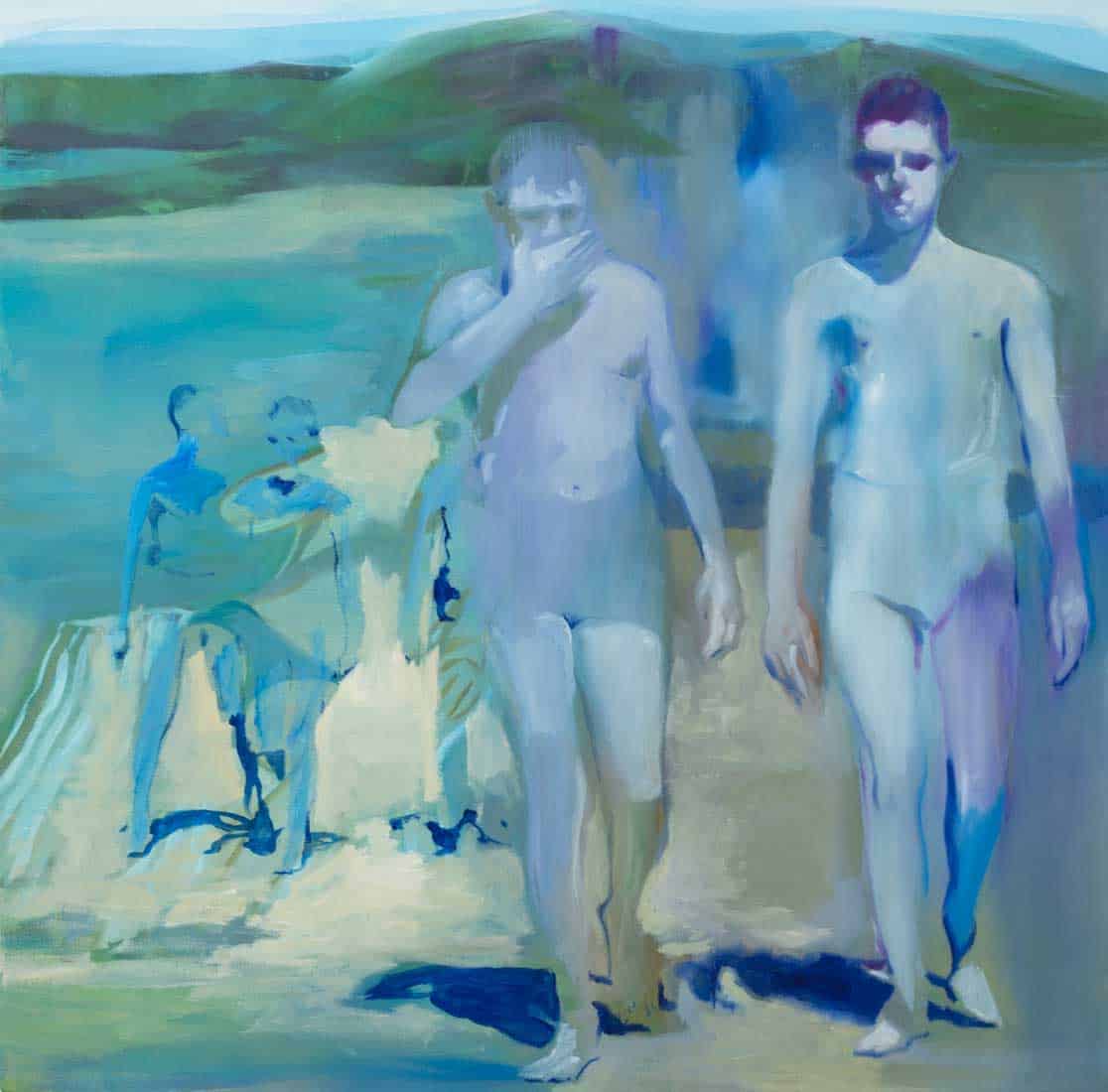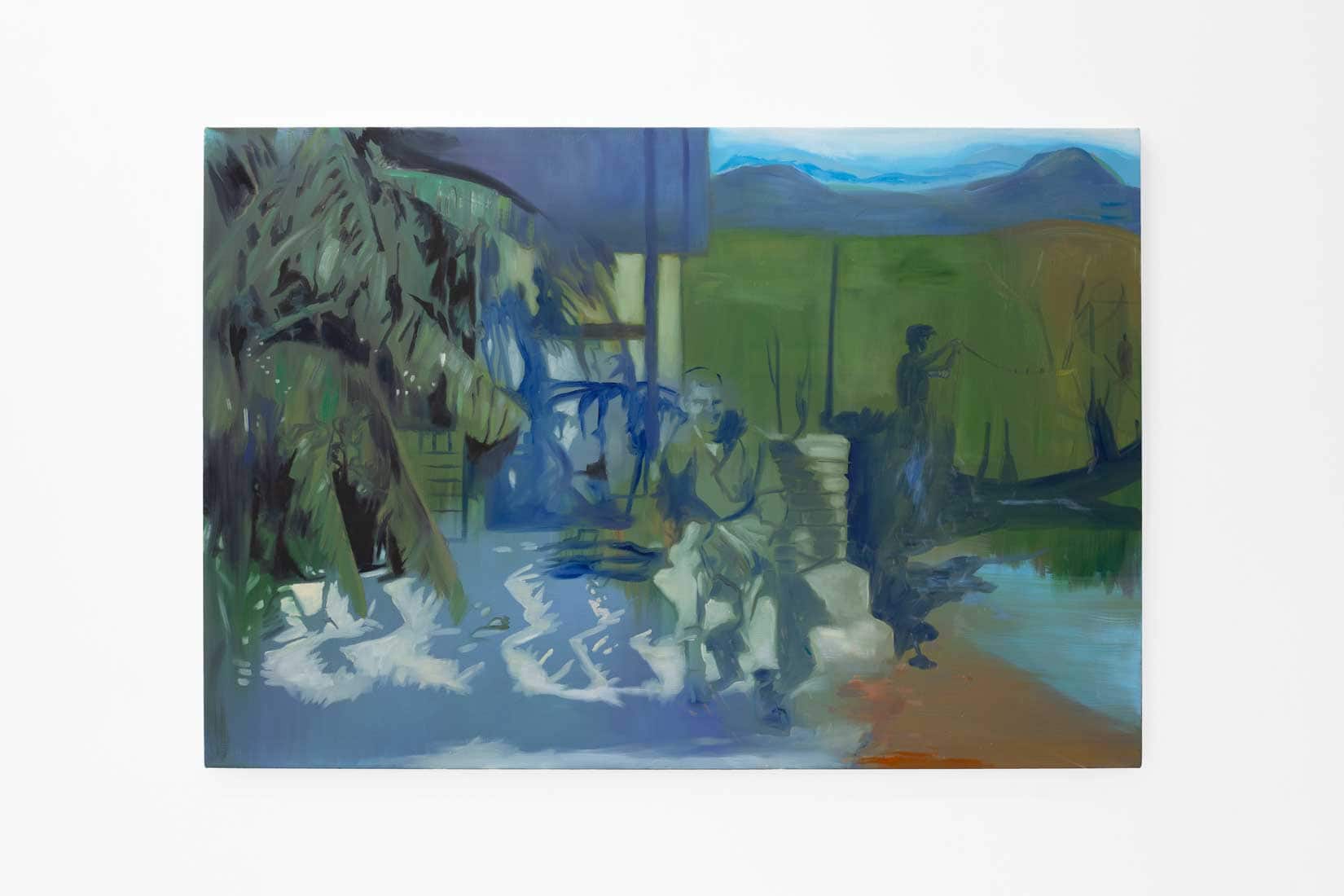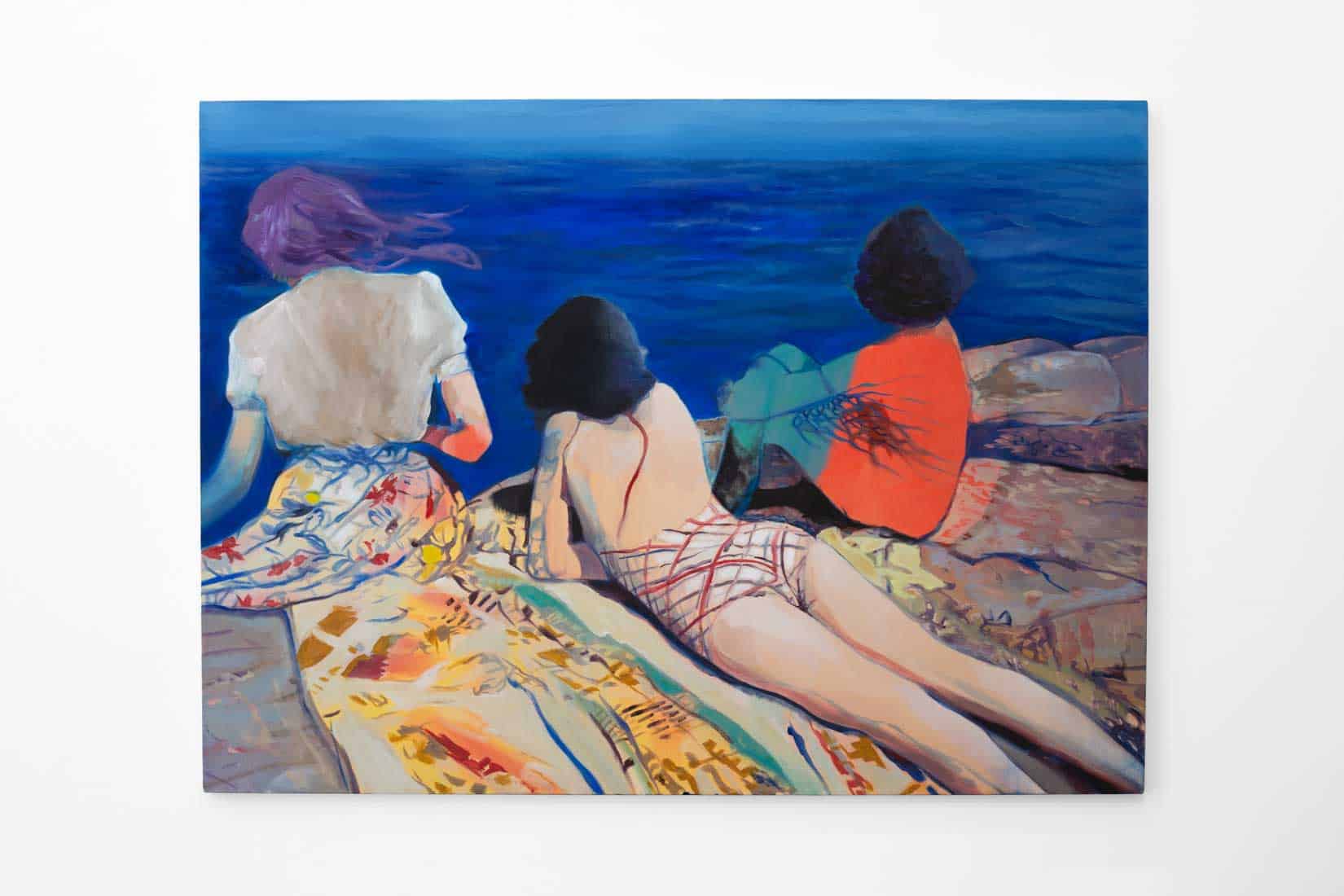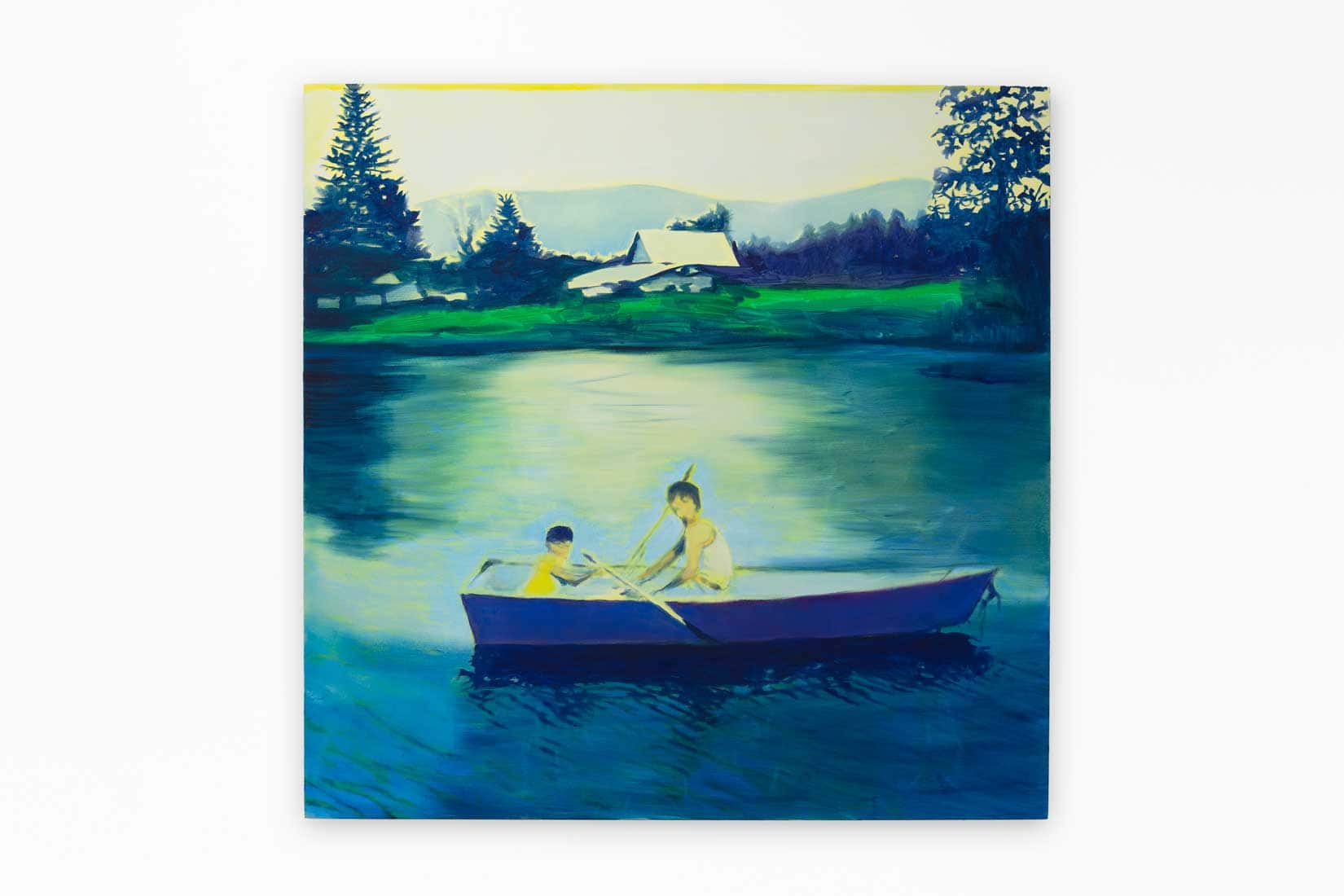To be lost is to be fully present, and to be fully present is to be capable of being in uncertainty and mystery.
Rebecca SolnitA Field Guide to Getting Lost (2005)

Kate Gottgens, Future Past, 2025
Working in tandem with Time itself as a co-creator to her pieces, South African artist Kate Gottgens’ paintings stem from photo catalogues and archives of the worn and the weathered; discarded photos which have been faded by the sun or torn by repeated handling, the once unintentional losses of the photographs are reproduced on canvas of Gottgens’ own volition. The resulting compositions blur memories, stories, and meanings—enmeshing them onto one another until no singular narrative can be extracted from the rich pigments. These bottomless paintings create something unsettling about otherwise idyllic suburban scenes, with faces that escape your memory, a sunny sky taking a melancholy hue, or a haunting absence where a person must have once stood.
Future Past is indicative of Gottgens’ process: a blending and overlaying of disparate bodies and photographs into one painting—a new life for these faded memories now abstracted from their original context. The emotions and tone of the photographs can no longer be found, translated instead into the thin wash of turquoises that sketch out the landscape and the full-bodied pastel blues that carve the figures into the foreground. The layers and tonality of the blues create an almost spectral quality, as though memories or spirits walk alongside those living in the present.
The persistent use of blue references Maggie Nelson, who in her book Bluets describes it as a colour of beauty, of longing, and—most poignantly—of memory. Working in a series of blues, Gottgens’ becomes what Nelson refers to as “blue correspondents”, those who create and live through the colour to explore its aesthetic and emotive qualities.

Kate Gottgens, A New Day, 2025
Bluets finds blue to be deeply complex, evading the possibility of concise definition. The tones and shades of blue evoke something different to each passerby; harking back to Rebecca Solnit’s notion of comfortable uncertainty from her book A Field Guide to Getting Lost. The two texts weave into one another in the understanding of The Blue of Distance, where each painting is both full of meaning yet devoid of narrative. The layered references of A New Day obscure the location and period of both the foregrounded sitter or the figure stringing lights in the background. And yet neither is more defined than another—sketched thinly and minimalistically in blue paint, neither person dominates the composition, yet neither can be removed from it without leaving something amiss.
Playing again with the reflections of Nelson, Gottgens adds her contribution to the discussion of “what blue means […] outside of meaning”—in the layers of stories and pasts that blur together on her canvas, the same pigment takes on new interpretations and emotions depending on interpretation. In Forever, are the three sitting women all from the same time? The same place? Was this a joy that they shared together, filled with the rich blues of the sea and sky bleeding and reflecting onto their skin and memories? Or perhaps is the woman in the middle, most clearly defined and thickly painted, reminiscing a time where she would have once gone to the waterside with her two close companions, spirits who now fade away into a melancholy blue of nostalgia and longing?

Kate Gottgens, Forever, 2025
Rejecting strict narrative, Gottgens’ paintings relish the beauty of subjective experience—how one person’s life, emotional state, and memories might colour the same painting differently than to another. She encourages prolonged reflection, reading through all the possibilities within a singular canvas, and then begs: return. Come look again on another day. Experience these same works—the translucent figures of Future Past and the silhouetted trees of Away—with a different set of eyes and ask if the blues still carry the same emotion as they did the time before
(By Teddy Woods)
